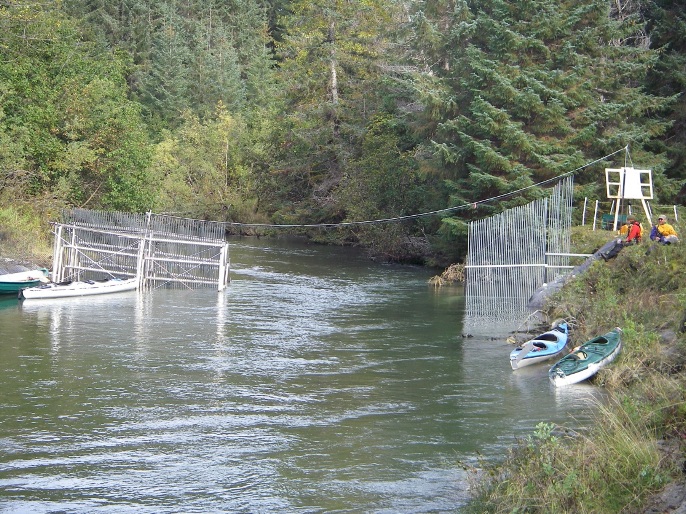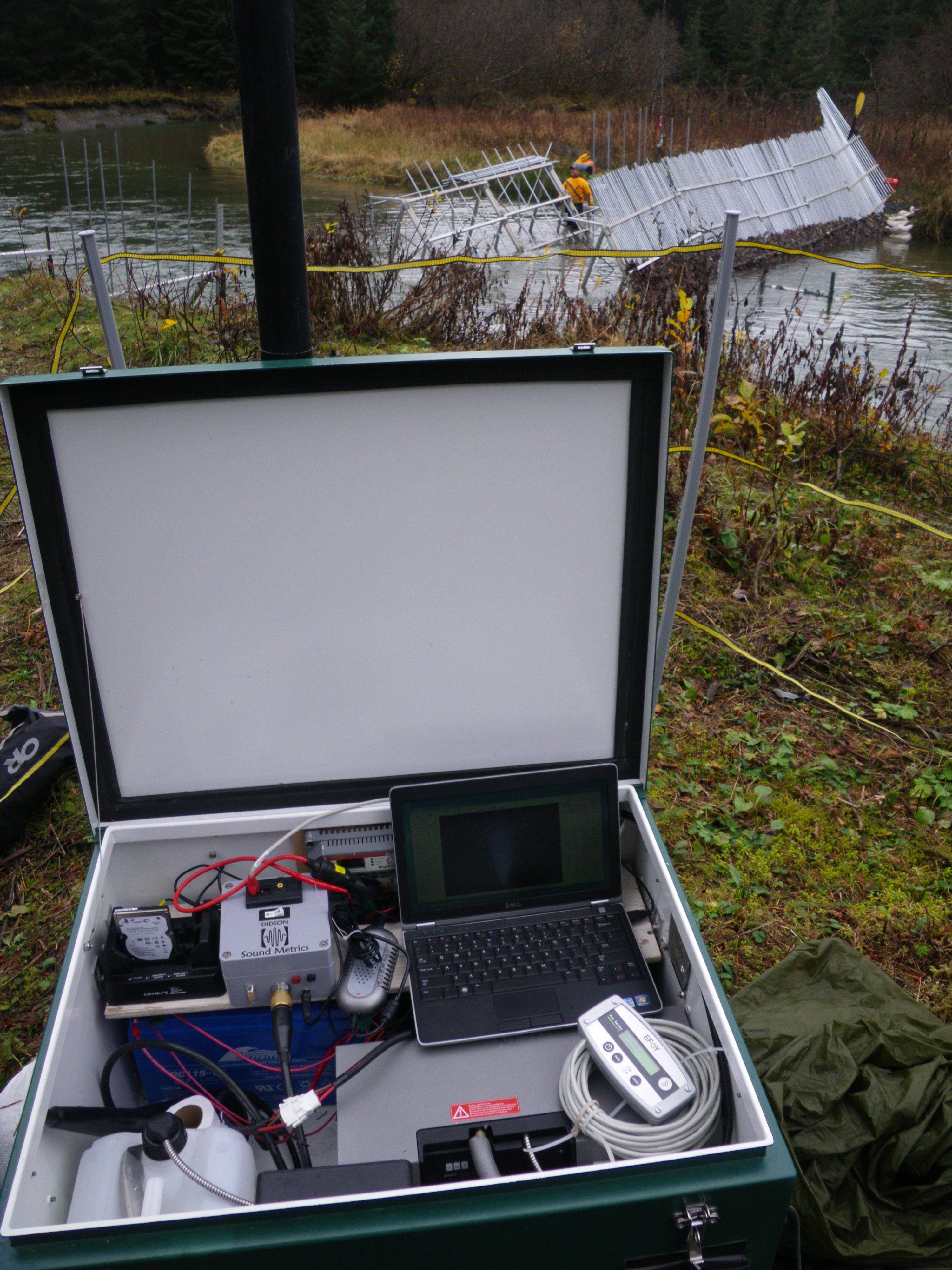
Fisheries biologists set up a solar-powered sonar fish weir on the Bartlett River. NPS photo
Few other species are as integrated into so many levels of the ecosystem as salmon. The marine nutrients they have incorporated into their flesh over the one to five years spent feeding at sea will fertilize the forest and aquatic vegetation and sustain everything from insects to bears. Wolves, seals, sea lions, eagles, land otters, killer whales and mink to name a few of numerous predators will also feast on the prodigious returns of salmon. These fish, play a starring role in the geographical feature we call Glacier Bay –they are certainly a keystone species.
Not unlike bears or shrews, people rely heavily on the sustenance of salmon. For thousands of years Tlingit people have spent summers catching and drying salmon along Southeast Alaska streams. In many ways the presence of salmon has shaped culture and human patterns on the landscape.Today, as in the past, salmon are as important. A Trout Unlimited commissioned economic report estimates that all salmon fisheries (sport, charter, commercial, subsistence) contributed nearly a billion dollars and 7,282 jobs to Southeast Alaska in 2007 (TCW Economics, 2010). Whether for jobs, recreation or subsistence, more people than ever are flocking to southeast Alaska in search of salmon. Despite their vast importance to the region we know relatively little about salmon abundance in park streams.

East Alsek sockeye salmon display the range of morphological changes that occur as they shift from marine life and prepare to spawn in freshwater. NPS photo
The objective of the project is to provide a baseline against which future change in Bartlett River coho salmon spawner abundance and harvest can be compared. Accurate escapement and harvest estimates for Bartlett River coho salmon will help ensure sustainable fishery harvest given likely increasing future fishing effort and changing habitat conditions.

Sonar instrumentation with fish weir in the background. NPS photo
Preliminary results from 2012 indicate that 6,952 coho passed the sonar while only 11-228 (95% C.I.) were harvested (<5%) by anglers in 2012. Harvest in 2013 ranged from 466-1584 coho (95% C.I.) Though image analysis for 2013 and 2014 is complete, preliminary escapement estimates have not been finalized. Recording around the clock fish passage for two months each season generated nearly three terabytes of data for each of the three years, necessitating considerable analyses time reviewing and quantifying. Final results from this three-year study are expected in October 2016.
A harbor seal follows a fish in this video taken from the sonar. This seal was nearly four miles from the ocean.
Another video clip shows many fish passing by the sonar.
For more information about this project please read our Research Highlight.
